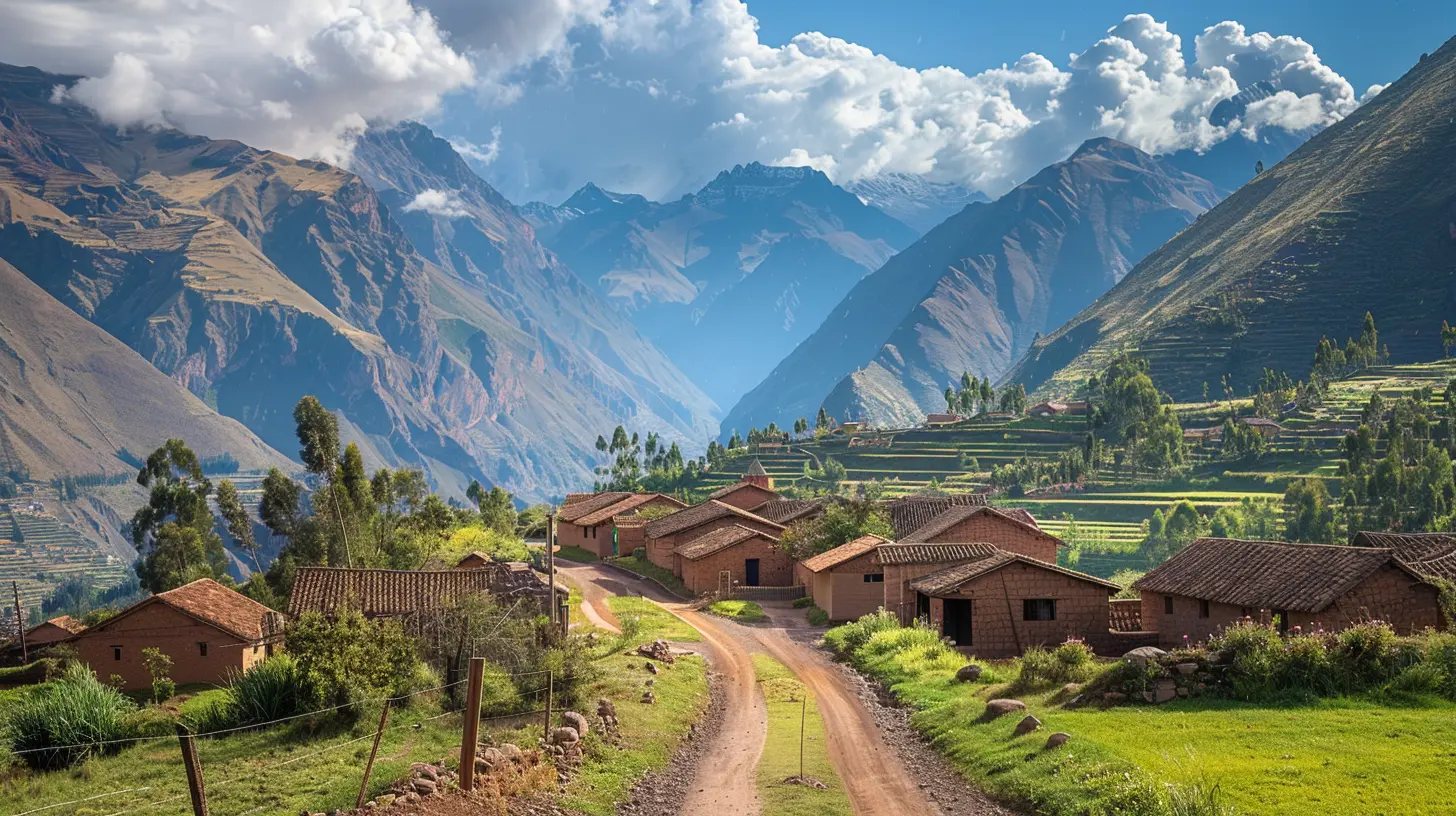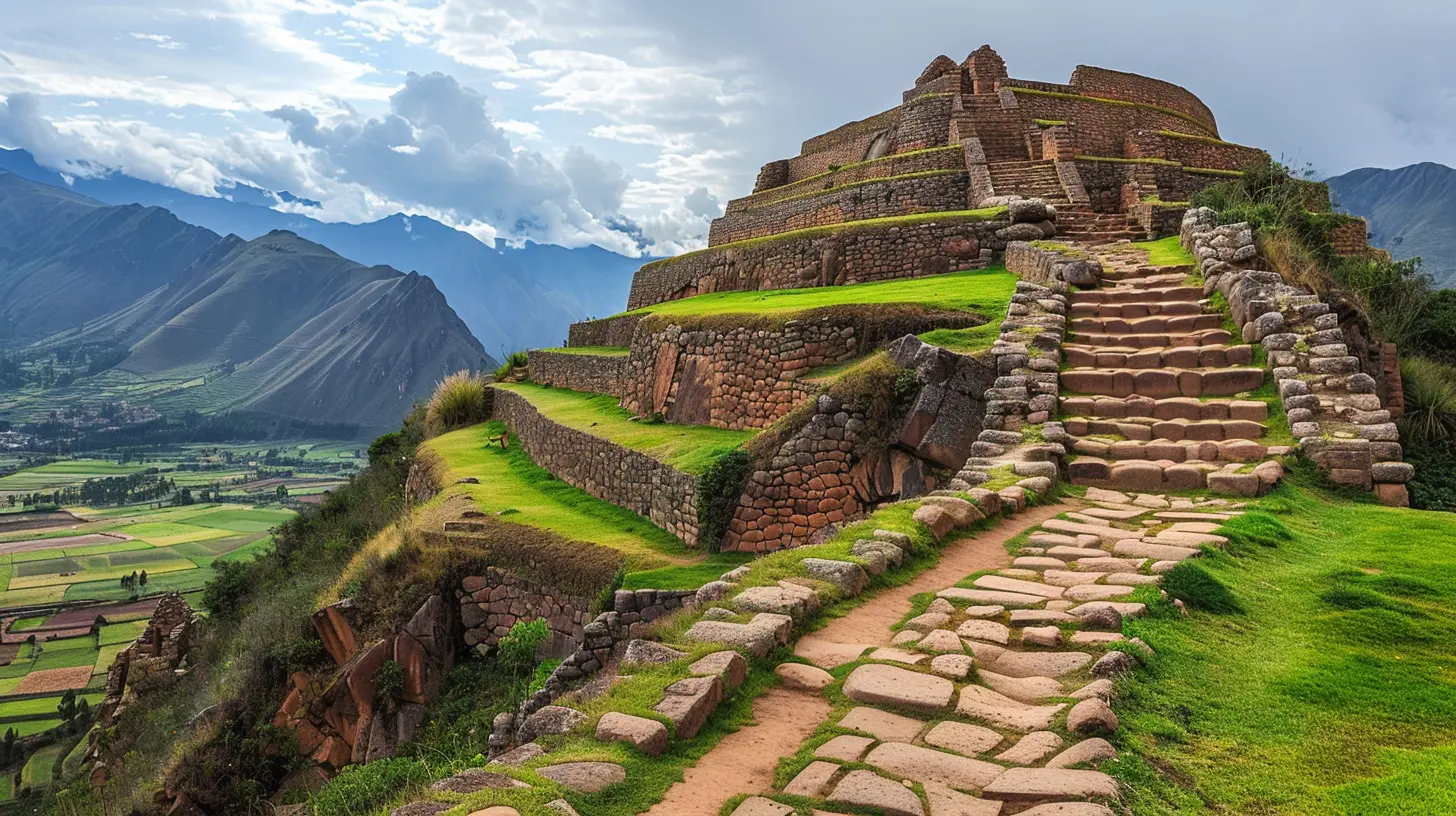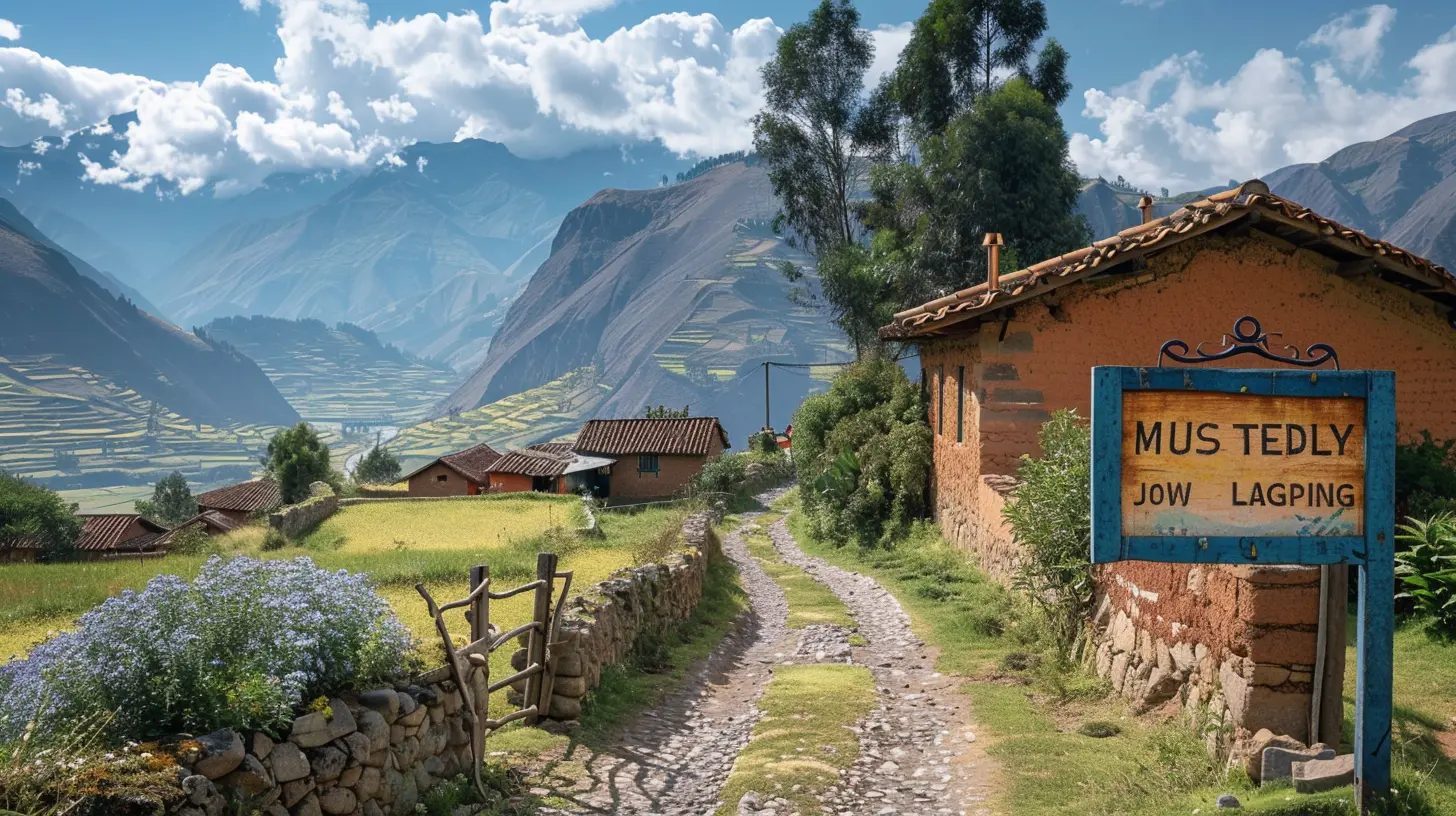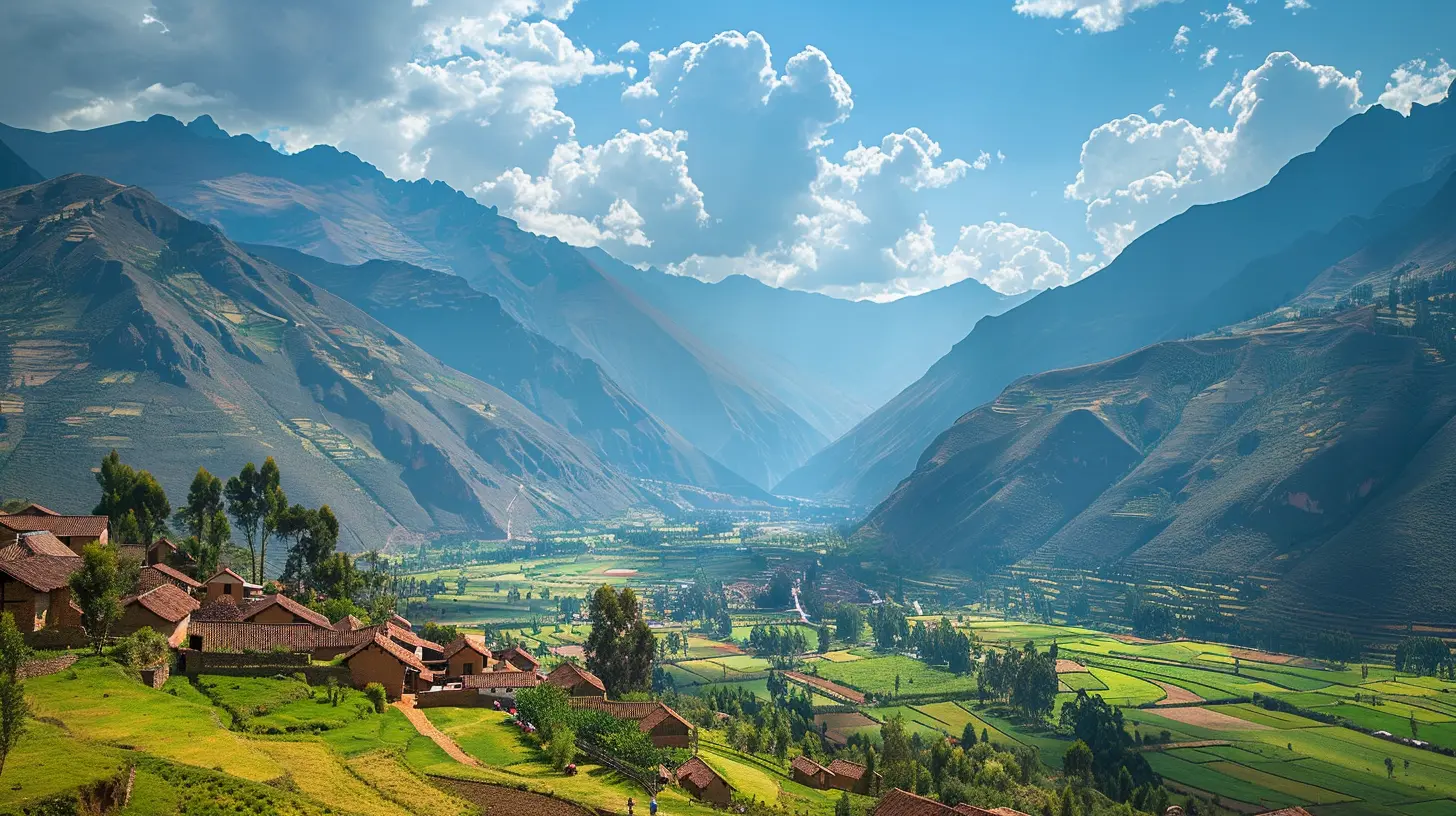The Intriguing History of Peru’s Sacred Valley
28 September 2025
Peru’s Sacred Valley is more than just a stunning landscape of rolling green hills, towering mountains, and ancient ruins—it's a living, breathing museum of history. Nestled between Cusco and Machu Picchu, this valley played a crucial role in the rise and fall of the Inca Empire. But what makes the Sacred Valley so special? Let’s take a journey through time and uncover the fascinating history that shaped this legendary region. 
The Heart of the Inca Empire
Before the arrival of the Spanish, the Sacred Valley was a vital part of the Inca Empire. It wasn’t just a random stretch of land—it was the backbone of their civilization. The Incas saw this valley as sacred because of its fertile lands and strategic location.A Perfect Location for an Empire
The valley, carved by the Urubamba River, provided the Incas with everything they needed to thrive: rich soil for farming, a steady water supply, and natural barriers for protection. Because of its lower altitude compared to Cusco, the valley had a milder climate, making it an agricultural paradise.Agricultural Advancements
The Incas were master farmers. They built complex terraces on the valley’s steep slopes, allowing them to grow maize, potatoes, and quinoa—staples of their diet. But it wasn’t just about farming; these terraces helped prevent soil erosion and managed water distribution efficiently. Even today, some of these ancient terraces are still in use!
The Sacred Connection: Why Was It So Important?
The name “Sacred Valley” isn’t just for show. The Incas believed the Urubamba River mirrored the Milky Way, and they thought of the valley as a spiritual link between the heavens and the earth. Temples, ceremonial centers, and astronomical observatories were built throughout the region, reinforcing the valley’s deep connection to their beliefs.A Closer Look at Inca Astronomy
The Incas were incredible astronomers. They designed their cities and temples to align with celestial movements. One example is the Temple of the Sun in Ollantaytambo, where the sun casts dramatic shadows on the solstices, marking the changing seasons.
Ollantaytambo: The Last Inca Stronghold
Among the many archaeological sites in the Sacred Valley, Ollantaytambo stands out. This fortress-like city was a crucial military and religious center.A Stronghold Against the Spanish
When the Spanish arrived in the 1530s, the Incas fought fiercely to defend their lands. Ollantaytambo became the last major stronghold of resistance. The Incas even managed to push back the Spanish in a legendary battle by flooding the valley, making it impossible for their enemies to advance.Unfortunately, despite their strategic brilliance, the Incas couldn’t hold off the Spanish forever. The fall of Ollantaytambo marked another chapter in the tragic downfall of their empire. 
Pisac: The Watchful Guardian of the Valley
Another gem of the Sacred Valley is Pisac. Sitting high on a mountain ridge, Pisac was both a military outpost and a spiritual hub.Unmatched Defensive Design
Pisac’s strategic location allowed the Incas to keep an eye on any potential invaders. The city's construction followed the natural contours of the mountains, making it almost impossible for enemies to conquer.A Connection to the Afterlife
Burial sites carved into the cliffs surrounding Pisac reveal its spiritual significance. The Incas believed in an afterlife, and Pisac’s tombs show how they prepared their dead for the journey beyond.Moray: The Ancient Inca Laboratory
One of the Sacred Valley’s most fascinating sites is Moray. At first glance, it looks like a series of giant, circular terraces. But there’s more to it than meets the eye.An Agricultural Experiment
Moray wasn’t just a random construction—it was an agricultural laboratory. The Incas used it to test different crops in various environmental conditions. Each level of the terraces creates its own microclimate, simulating different altitudes found throughout the empire. This allowed them to adapt crops for different regions, ensuring food security for their people.The Spanish Conquest and Its Impact
The arrival of the Spanish in the 16th century marked a turning point for the Sacred Valley. The once-thriving Inca civilization was devastated by war, disease, and colonization.Destruction and Transformation
Many Inca sites were destroyed or repurposed into Spanish churches and settlements. However, rather than completely erasing Inca culture, the Spanish blended their influences with indigenous traditions. This fusion can still be seen today in the architecture and customs of the people who live in the valley.The Sacred Valley Today
Though centuries have passed, the Sacred Valley remains a place of wonder. It attracts travelers from around the world, drawn by its breathtaking landscapes and rich history.A Living Legacy
Despite the Spanish conquest, Inca traditions are still alive. The Quechua people, descendants of the Incas, continue to practice their ancestor’s customs, from weaving intricate textiles to celebrating ancient festivals.A Must-Visit Destination
For those who love history, adventure, and culture, the Sacred Valley is a dream destination. Whether you’re hiking the Inca Trail, exploring the ruins of Ollantaytambo, or visiting a traditional Andean village, this region promises an unforgettable experience.Final Thoughts
The Sacred Valley isn’t just a collection of ruins—it’s a testament to the brilliance of an ancient civilization. Every stone, terrace, and temple tells a story of ingenuity, spirituality, and resilience. Whether you're a history buff, a nature lover, or a spiritual seeker, the Sacred Valley has something profound to offer.If you ever get the chance to visit, take a moment to stand in the valley, breathe in the crisp Andean air, and imagine the countless generations that have walked these lands before you.
all images in this post were generated using AI tools
Category:
Must See LandmarksAuthor:

Tracie McAdams
Discussion
rate this article
1 comments
Cruz Snyder
What a fascinating glimpse into Peru's Sacred Valley! The blend of ancient cultures and breathtaking landscapes truly makes it a must-visit destination. I can’t wait to explore the rich history and stunning sights myself. Thanks for sharing this intriguing info!
September 28, 2025 at 3:48 AM

Tracie McAdams
Thank you! I'm glad you found it intriguing—Peru's Sacred Valley truly is a remarkable blend of history and beauty. Enjoy your exploration!

